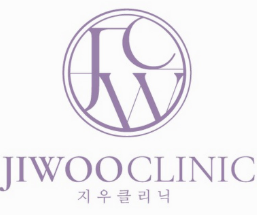Laser Treatments in Korea for Darker Skin
Why Darker Skin Needs Special Consideration with Lasers
If your skin tone is mid-to-deep (brown, dark brown), the rules of laser treatment shift slightly. You face:
- Greater risk of post-inflammatory hyperpigmentation (PIH) or hypopigmentation after aggressive laser use.
- A need for selective targeting of pigment with minimal damage to adjacent skin.
- The importance of choosing devices/settings optimised for higher melanin content and appropriate skin depth.
Korea’s pigmentation-laser clinics explicitly recognise this and often advertise “pigmentation treatment for Asians” or “tailored lasers for deeper tones.” For example, one clinic states it targets pigmentation from epidermis to deep dermis with minimal damage.
Types of Lasers & Technologies Used in Korea
Here are some of the common lasers and technologies used in Seoul for darker skin/pigmentation and how they compare:
- Q-switched Nd:YAG (1064 nm / 532 nm) — The longer 1064 nm wavelength penetrates deeper and is safer for darker skin tones (less melanin absorption in epidermis) which reduces risk of surface pigment damage.
- Pico-laser (Picosecond pulses) — Ultra-short pulses that shatter pigment with less thermal damage around it, good for stubborn pigment in deeper layers. Korean clinics list Pico for hyperpigmentation and melasma. seoulskincareclinic.com
- Laser Toning / Pigmentation Lasers — Clinics in Seoul offer “pigmentation laser” treatments targeted at sun-spots, melasma, dark marks. E.g., Renovo Skin Clinic lists “Pigmentation Laser: uses different wavelengths … then a healing mask”.
- Combination & multi-modality treatments — Many clinics combine lasers + peels + boosters to reduce risk and improve outcome. For darker skin, a multi-layered approach is safer. gangnamskincareclinic.com
Is It Safe for Darker Skin in Korea?
Yes — with caution and the right clinic, laser treatments can be safe and effective for darker skin in Korea. Here’s what to check:
- The clinic explicitly states experience with pigmentation treatment in Asian/medium-to-deep tones. For example, the YOON Clinic page says:
“Advanced laser treatments … safely target melanin without damaging surrounding skin, making them ideal for treating melasma, sunspots and acne scars.” seoulskincareclinic.com
- They use devices/wavelengths suited for high-melanin skin (e.g., 1064 nm Nd:YAG, Pico-laser) rather than aggressive ablative lasers more suited for very light skin.
- They perform a skin consultation including skin depth, pigment type (epidermal vs dermal), melanin level, and will tailor settings accordingly. The Cheongdam Clinic page emphasises diagnosis + multiple equipment options.
- They emphasise after-care and sun-protection because darker skin has higher risk of rebound pigment if sun exposure occurs post-treatment. Many Korean pages emphasise sunscreen and maintenance.
What to Ask & Look for as a Foreign Patient with Darker Skin
Since you’re likely travelling to Korea for this, here are key questions and criteria:
- “Which laser model & wavelength will you use for my skin type (brown/deep tone)?”
- “How many sessions do you recommend for my pigment type? What is the realistic number of treatments?” Some clinics say more than 7-10 sessions may be needed.
- “What is the risk of rebound pigmentation or hypopigmentation in my skin tone and how do you manage it?”
- “Are the before & after photos for patients with similar skin tone to me (not just very fair skin)?”
- “What does the after-care plan include? Especially regarding sun protection, skincare, downtime.”
- “Do you have an English-speaking coordinator and what happens if I’m a bit far from Seoul when a follow-up issue arises?”
- “What is the cost per session and do you provide discounted packages for multiple sessions?” For example, Lienjang lists price range Pico Toning ₩120,000-480,000 for 1 session.
Travel & Procedural Logistics in Korea
- Choose a clinic in Seoul (Gangnam, Myeongdong) with experience treating international patients.
- Stay for enough time to complete first session and follow-up check (many pigmentation laser treatments require multiple visits).
- Bring your skincare history: previous treatments, skin-tone changes, any history of burns or pigmentation flare-ups.
- After treatment, strict sun protection is non-negotiable: broad-spectrum SPF 50+, hats, avoiding tanning. Sun triggers pigment in darker skin.
- Ask about potential downtime: Many pigment-laser treatments have minimal downtime but some redness/scabbing is possible. For darker skin, extra caution to avoid picking or irritation is important.
Final Thoughts
If you have a darker or brown skin tone and are considering laser treatments in Korea for pigmentation, you’re in a strong position — Seoul clinics are highly experienced in pigmentation work and use technology well-suited for melanin-rich skin.
The keys are: pick a clinic with proven experience in deeper tones, ensure they use the right laser wavelengths and settings, do the necessary number of sessions, and commit to after-care and sun protection. With that setup, you can expect safe, visible improvements in tone, clarity and pigmentation.



